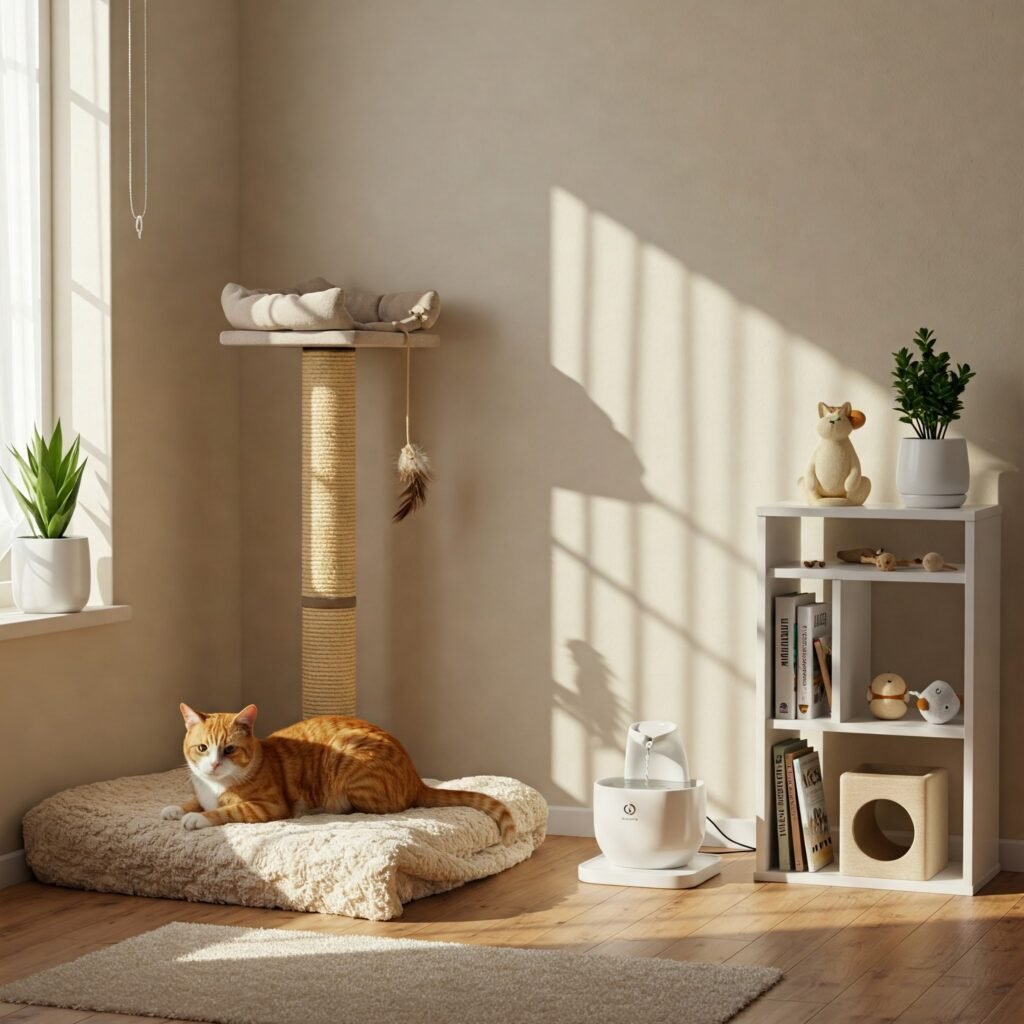
The Pet Merch is a cozy, creative shop that turns your cat into personalized gifts — from hilarious memes to heartfelt tributes — all designed with love by real cat lovers.

By Uzair Ahmed, Co-Founder of The Pet Merch
Bringing Cocoa into my life wasn’t just about having a cat—it was a commitment to becoming the kind of person who shows up for another living being, every day, no matter what. Responsible pet ownership isn’t just about meeting basic needs—it’s about creating a life your cat can thrive in. From diet to enrichment, here’s what I’ve learned from raising Cocoa, plus insights from professionals in the feline care space.
When I first saw Cocoa curled up in the shelter, I had that heart-melting moment many new cat parents know. But what I didn’t fully grasp at the time was the level of commitment I was signing up for. Cats live on average 13–17 years, and every year brings new responsibilities—from vaccinations to behavioral changes to unexpected vet bills.
Responsible ownership means thinking long-term. That includes:
“The moment you bring a pet home, you’re committing to being their voice and guardian. Their entire world revolves around you.” — Dr. Ernie Ward, DVM
And as I learned quickly, Cocoa didn’t care if I had a deadline or a bad day—he still needed me to show up.
When Cocoa first came home, I underestimated how important a routine would be. I figured I’d feed him when I had time and play when it worked for me. But cats are creatures of habit, and without a predictable environment, they become stressed or even unwell.
Over time, I built a rhythm: feeding at the same time daily, cleaning the litter box every night, brushing after dinner, and dedicated playtime before bed. Cocoa not only became more relaxed—his trust in me grew.
Cats don’t speak our language, but they notice when we’re consistent.
“A predictable schedule provides emotional security for pets. It’s how they know they are safe.” — Dr. Mikel Delgado, Certified Cat Behavior Consultant
Early on, I thought Cocoa’s zoomies were just “cat things”—funny and random. But when I skipped play for a few days, he started knocking things over, clawing furniture, and yowling late at night. That’s when I realized: play isn’t just entertainment—it’s a biological need.
Through daily interactive sessions using wand toys, feather sticks, and even DIY tunnels, I saw Cocoa’s confidence and behavior improve. Play:
“Without structured play, cats may redirect their frustration into unwanted behaviors. They need the physical and mental challenge.” — Jackson Galaxy, Feline Behavior Expert
Now, playtime is our daily ritual. It helps Cocoa feel seen and keeps our bond strong.
I’ll be honest: I didn’t know much about cat food at first. I grabbed a mid-range bag of kibble and assumed that was enough. But after reading up and speaking to our vet, I made big changes. Cocoa’s coat became glossier, his digestion improved, and he seemed more alert.
What I feed now:
“Feeding cats a species-appropriate diet helps prevent common issues like obesity, diabetes, and urinary tract disease.” — Dr. Lisa Pierson, DVM, CatInfo.org
I also learned the importance of gradually transitioning between food types and tracking Cocoa’s weight monthly.
Responsible cat parenting goes beyond basic care—it means actively enhancing your cat’s environment. Living indoors doesn’t have to mean a dull life. Once I introduced vertical shelves, cozy perches near sunny windows, rotating toys, and cat-safe plants, Cocoa’s behavior became more balanced.
Environmental enrichment ideas I’ve tested:
“Boredom is the root of many behavioral problems in cats. Enrichment is preventive care.” — International Cat Care Organization
Even a small apartment can become a cat haven with thoughtful layout and stimulation.
Cocoa isn’t a lap cat, and he’s not always in the mood for attention. At first, I took it personally—was I doing something wrong? But I learned that love in cats looks different. It’s the slow blinks, the quiet naps near you, or choosing your hoodie over their bed.
Being responsible also means respecting your cat’s personality, autonomy, and signals.
“Cats show affection in subtle ways. Letting them initiate interaction is a sign of deep respect.” — Dr. Sarah Ellis, Cat Behavior Specialist
Now, when Cocoa curls up next to me or gives that blink-squint combo, I know he’s saying, I trust you.
Caring for Cocoa taught me discipline, patience, and empathy. It’s not always easy, and there are days when I feel overwhelmed. But I’ve built a life around showing up for someone who depends on me—and that’s been one of the most fulfilling parts of my journey.
“The Pet Merch was built on this exact love. Every product, every blog, every story we tell is rooted in the idea that our cats deserve care, celebration, and respect.” — Uzair Ahmed
What has your cat taught you about responsibility? Whether it’s a lesson in patience, planning, or unconditional love—share it below and join the conversation with other cat parents.
@thepetmerch Cats really living the dream life. Snag cozy cat-themed gifts at The Pet Merch – perfect for lazy days. Use COCOA20 for 20% OFF #catnap #sleepycat #catlife #cozyvibes #thepetmerch #COCOA20 #fyp
♬ original sound – 𝕮𝖆𝖑𝖍𝖔𝖚𝖓™⋆
Integer posuere erat a ante venenatis dapibus posuere velit aliquet sites ulla vitae elit libero


The Pet Merch is a cozy, creative shop that turns your cat into personalized gifts — from hilarious memes to heartfelt tributes — all designed with love by real cat lovers.
Be the first to know about new drops, exclusive promos, and purr-fect gift ideas.
Plus, enjoy 20% off your next order – our little way of saying thanks!